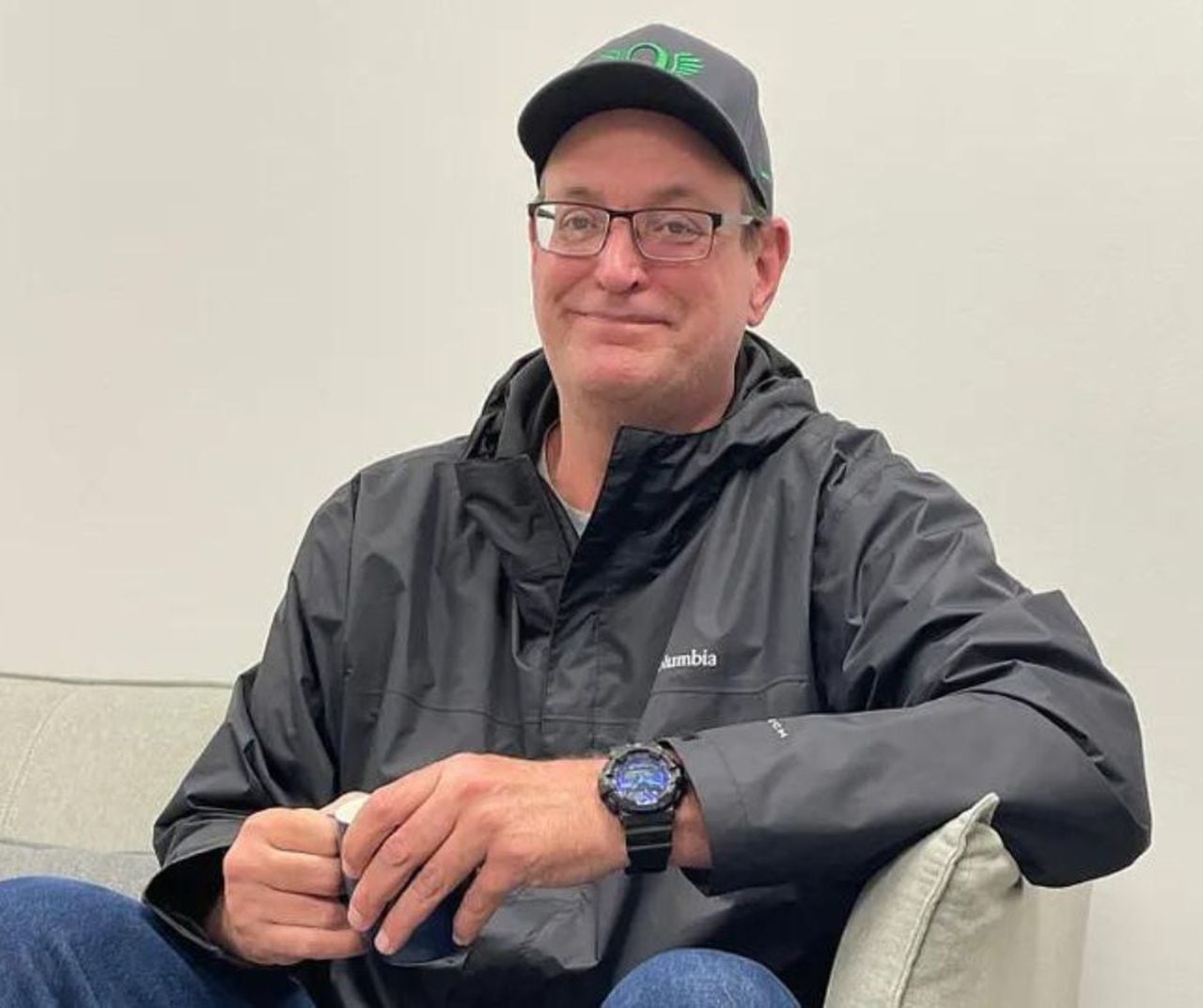When William Fransen was released from the Oregon State Hospital a year and a half ago, he faced much uncertainty. And at first, he faced it alone.
He’d been homeless before he was arrested in 2021. The courts later determined he was too mentally ill to participate in his own trial and sent him to the state psychiatric institution for treatment. Now, he was afraid that he’d be left scrambling for a job and a place to live after his time ran out at a transitional housing facility.
His fears were soothed when a case manager from the Washington County-based social service nonprofit New Narrative showed up at one of his court hearings. The case manager was part of the county’s “Polaris” program, a peer-support service that helps connect patients released from the Oregon State Hospital to some of their most urgent needs: food, medical appointments, warm clothing and housing.
The Oregon Health Authority will soon test a program that could provide many of the same services to former state hospital patients around the state, assigning them peer supporters and social workers after they leave the psychiatric hospital in Salem and return to their home communities. The “community navigator” program aims to lower the chances that patients will fall into homelessness or be re-arrested and return to the state hospital.
It would at least initially focus on so-called “aid-and-assist” patients — those, like Fransen, charged with a crime but found unable to defend themselves in court.
Latest stories from our Oregon Mental Health series
- Oregon ‘community navigator’ program aims to ease transition out of state psychiatric hospital
- High bar for hospitalizing mentally ill Portlanders without consent leaves those in great need on the street
- Multnomah County mental health leaders agree some patients need involuntary treatment — but where?
- Oregon mental health leader says state finally has money to boost treatment beds; Staffing them is another matter
- Letter from the Editor: We’re focusing on mental health challenges in Oregon
The program stems from a recommendation by Dr. Debra Pinals, a Michigan-based mental health specialist who conducted court-mandated reviews of the state hospital’s admissions practices beginning last year.
In her latest report, Pinals noted that the hospital has for several months managed to promptly admit aid-and-assist patients, a development that puts it in compliance with a court order it had previously struggled to obey because of overcrowding. With that issue in check for now, she urged the state to quickly address shortcomings in other parts of the mental health system.
Pinals said state hospital leaders should identify a community navigator program to use and select some communities in which to test it by mid-November. By January, she said, the state should have trained staff who could begin working in those counties by February. A year after that, she said, the state should review the program and consider expanding it to the rest of the state.
Oregon Health Authority mental health officials acknowledge they’ll be bringing the program to an already strapped behavioral health system. Behavioral health providers across the state are struggling to hire and retain staff. But they see value in Pinals’ proposal.
“When someone is leaving OSH and entering the community, there’s a gap,” said Samantha Byers, Oregon Health Authority’s director of adult behavioral health. “Everything is coordinated, but there’s no one to help them navigate the communication and all the systems we have to go through.”
Having someone to help bridge that gap was crucial for Fransen.
He ended up in the state hospital soon after he walked into a Beaverton-area gas station in 2021 and tried to buy a $1 cigar. The cashier asked for identification, which Fransen didn’t have. Fransen said the cashier called off the transaction but didn’t return his money.
He got angry, picked up a metal bar and threatened the cashier, who called the police. Fransen was arrested on charges of menacing and unlawful use of a weapon.
Getting released from the state hospital into transitional housing gave him the beginnings of a support system, he said. But he still needed to find a job and get back on his feet.
Working with Polaris, he said, gave him a financial and emotional safety net as he did so. Over the next 10 months, the agency paid for hotel stays, helped him fill out job applications and called him at least once a week to see what he needed.
Meanwhile, Fransen pleaded guilty on the menacing charge and the judge dismissed the charge of unlawful use of a weapon. A few months after his release, the judge also ended his probation.
Fransen found a job as a cleaner at Providence St. Vincent Medical Center and is now living in his own apartment. He attributes his newfound stability to Polaris’ support.
“It gave me the opportunity to look for a job, time to think, to prepare,” he said. “I don’t know what else I can say other than they were there.”

Fransen worked with the Polaris peer support program for 10 months after he was released from the Oregon State Hospital. He credits the program with helping him get back on his feet.New Narrative
Patients and mental health advocates have long called for support after leaving the state hospital — particularly for those who had longer stints in the facility and may have lost their job, transportation or ties with friends or family while institutionalized. Without that support, whatever improvement those patients might have made in treatment at the hospital might quickly erode.
Aid-and-assist patients are of particular concern because of the restricted amount of time they spend in the state hospital.
A 2002 federal court order mandates that the state hospital must admit aid-and-assist patients within seven days rather than let them languish in jail. But following years admissions backlogs, made worse by the pandemic, a federal judge ordered in 2022 that they must be released from the hospital on strict timelines — in most cases not exceeding 6 months — to make room for new patients.
Emily Cooper, the legal director of the watchdog group Disability Rights Oregon, said other patients who have had longer stays at the state hospital need support services too — but that the community navigator program aims to bring down the nearly 20% rate of recidivism for aid-and-assist patients, which could reduce the number of patients making repeat visits to the hospital.
Data shows, Cooper said, that the patients who come back to the state hospital often have “co-occuring disorders,” such as drug or alcohol addiction, that can aggravate their mental illness.
“If you get treatment, you disrupt that cycle,” she said, “That’s what the community navigators are about.”
The health authority plans to test the program in the six counties with the highest number of residents in the state hospital — Clackamas, Deschutes, Lane, Marion, Multnomah and Washington counties. County mental health workers will staff the program, and the state has budgeted $6 million for case management.
At Pinals’ suggestion, the state is negotiating with the Centers for Medicare and Medicaid to waive a rule to allow patients to keep their Medicaid coverage while they’re institutionalized.
Many patients with behavioral health needs are eligible for Medicaid, the state and federally funded program that provides health care to low-income people. But while a person is jailed or institutionalized at the Oregon State Hospital, they lose their Medicaid coverage, and the state picks up the bill for their treatment.
The federal rule was imposed as part of a movement to deinstitutionalize mental health care, moving patients from large psychiatric hospitals to community-based clinics and homes.
Changing that policy would allow community navigators to begin helping patients, with Medicaid paying the bill, before they leave the hospital.
Success elsewhere
The community navigator program is new for the Oregon Health authority, but similar services exist elsewhere — both in and outside of Oregon.
A local government in Northern California created a “behavioral health navigators” program after Santa Clara County staff noticed that patients were calling their crisis line with needs that stretched far beyond mental health. Peer navigators help patients, both on the phone and in person, to find services such as medical doctors and child care, while also connecting them to mental health services.
The Santa Clara County program acts as more of a help desk than the long-term services that Oregon plans to offer.
But one year in, the California program is seeing results. Bruce Copley, the program director, said surveys of patients who have used the program reveal a 95% satisfaction rate, and fewer are having to seek more intensive mental health care or returning to jail.
“It just really opens up to the community and reduces the stigma with mental health,” Copley said.
Washington County has contracted since July with New Narrative, the Tigard mental health nonprofit that worked with Fransen. The peer-support program for patients leaving the Oregon State Hospital costs $440,000 per year and, like the proposed state program, focuses on aid-and-assist patients.
Case managers connect with patients shortly after they enter the state hospital, inquiring about their needs and attending monthly meetings with the patient’s care team. Upon the patient’s release, the case manager can help connect them to those needs, including housing, food, mental health services or substance use treatment.
Chance Wooley, Washington County’s forensic mental health supervisor, said the county’s share of state funding for the community navigator program would build upon the existing service.
While the county’s program is only a few months old, Wooley said it’s showing promise. Staff have connected clients to housing more quickly, and judges have dismissed some cases sooner because the patients are doing better through their work with a case manager.
Many of the case managers have experienced their own mental health challenges. That patients work with someone who knows firsthand what they’ve been through, Wooley said, is key to the program’s success.
“It might mean they’ve been at the state hospital against their will, or prescribed medications that make them feel physically ill. It might mean they’ve experienced mental health symptoms similar to mine. The perspectives are a lot different,” he said. “One of the best predictors of good outcomes is having a connection with the provider. Polaris has been effective at forming an alliance with their clients.”
Fransen said it was important to him that case managers would simply listen, and that they understood his background.
The stigma of homelessness can be hard to shake, he said — and it helps that some of the navigators have lived it.
“If you really want to understand the homeless, take a month or two and live outside without anybody letting you walk through their doors,” he said.
Byers, from the Oregon Health Authority, acknowledged there will be challenges to get the Oregon program off the ground. Behavioral health providers are struggling to staff their practices. And as the state tries to support patients as they return to the community, it is still scrambling to place those patients, as many group homes and residential facilities are full.
Still, she said, helping patients through those basic needs is crucial to their recovery.
“At the end of the day, they need a place to live, to know where their next meal is coming from, and they also need some connection,” she said. “Some people coming out (of the state hospital) don’t want to connect. But for others, that human connection is vital.”
—Jayati Ramakrishnan; jramakrishnan@oregonian.com
Oregon’s failure to provide adequate mental health treatment for its residents has grown more severe and more visible in recent years, but its beginnings go back decades. Ongoing reporting from The Oregonian/OregonLive aims to shine a light on barriers to quality care, identify failures of policy, and illuminate a path forward.
